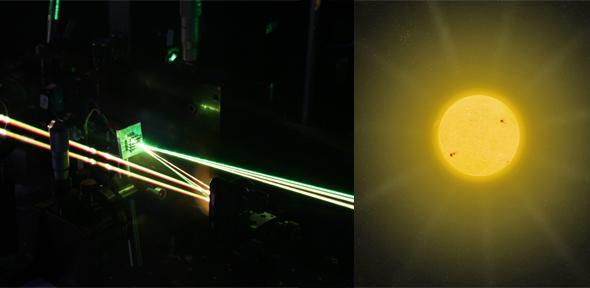
Submitted by Dr Nalin Patel on Tue, 26/11/2013 - 16:44
A process that could revolutionise solar energy harvesting has been efficiently demonstrated in solution for the first time.
Solar cells offer the opportunity to harvest abundant, renewable energy. Although the highest energy light occurs in the ultraviolet and visible spectrum, most solar energy is in the infrared.
There is a trade-off in harvesting this light, so that solar cells are efficient in the infrared but waste much of the energy available from the more energetic photons in the visible part of the spectrum.
When a photon is absorbed it creates a single electronic excitation that is then separated into an electron and a positively charged hole, irrespective of the light energy. One way to improve efficiency is to split energy available from visible photons into two, which leads to a doubling of the current in the solar cell.
The study, published in the journal Nature Chemistry, shows that this process of singlet fission to pairs of triplets depends very sensitively on the interactions between molecules. The researchers in Cambridge and Mons find that the fission process happens as soon as just two of these molecules are in contact, and remarkably, that singlet fission is then completely efficient—so that every photon produces two triplets.
“We began by going back to fundamentals; looking at the solar energy challenge from a blue skies perspective,” said Dr Brian Walker, a research fellow in the Cavendish Lab’s Optoelectronics group, who led the study. Dr Brian Walker is a recipient of a Winton Pump Prime award, which partly funded some of this work.
“Singlet fission offers a route to boosting solar cell efficiency using low-cost materials. We are only beginning to understand how this process works, and as we learn more we expect improvements in the technology to follow.”
Further information can be found via this link

